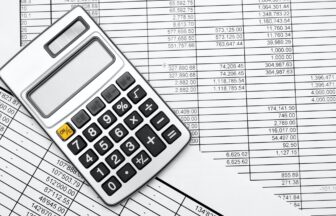Cross-border EC refers to electronic transactions that now allow online shopping in any language and in any currency During the four years from 2014 to 2018, the growth rate of the cross-border EC market size was 1.4 times in Japan. Furthermore, it was 1.6 times higher in the U.S. and 2.3 times higher in China.
In 2018, the size of the global market for cross-border e-commerce was approximately 74 trillion yen. In US dollar terms, this translates to approximately $400 billion. With such a high growth rate, what is the difference between cross-border EC and general trade?
In this issue, we will explain the logistics methods in cross-border EC and how they differ from general trade, and also introduce some examples of problems that can occur when using cross-border EC.
目次
Logistics Methods for Cross-border EC to China

This section describes logistics methods for cross-border EC to China.
Direct ship model
The method of selling or mailing directly to the Chinese is called the “direct shipment model.In the direct delivery model, when a Chinese purchaser buys a product listed on an e-commerce site, the product is generally delivered directly to the purchaser from the Japanese side using an international courier service.
Although it has the disadvantage of slightly longer lead times, the “direct shipment model” has been positively accepted by Chinese consumers.
The advantage of using the direct shipping model is that since the products are shipped from Japan, the consumer has a sense of security in terms of direct shipping, and it is also effective when considering product branding from the seller’s perspective.
Because the company ships each time an order is received, inventory is easier to manage, and this is another major advantage of using the direct shipping model.
bonded area model
The “bonded area model” refers to cross-border e-commerce utilizing bonded areas.In the bonded area model, goods are sent to the bonded area in China at once from the beginning, and the goods are stored in the bonded area inside China.
Then, after customs clearance is completed for each order, the goods are shipped from the bonded area.No tax is imposed during the period of storage.
Compared to the direct shipment model, the lead time can be shorter in the bonded area model because of the way goods are shipped from inside China. In the direct shipment model, the importer, the consumer, pays taxes on imports. In contrast, in the bonded area model, the seller in China collectively pays various taxes on behalf of the seller.
Although there is a fee for storing goods in the warehouse, the order is completed inside China from the time the order is placed to the time the shipment is completed. The bonded area model can be effectively used when the volume of goods sold is large.
What is the difference between cross-border EC and general trade?
The differences between cross-border EC and general trade are easier to understand in terms of the “tax regime” and “matters related to import regulations.
Taxation and import regulations vary greatly between general trade and cross-border EC.
Basically, cross-border EC is subject to lower taxes on prices than general trade. In addition, in some cases, the legally required inspection and examination certification passage required for general trade is not required for cross-border EC.
Even products that are difficult to export to China in general trade, such as health foods, cosmetics, and detergents, may be available for sale if the products are marketed through cross-border EC. In addition, when conducting commercial transactions through cross-border EC, procedures can be completed in a relatively short period of time and sales can be made at low cost.
Taking cosmetics as an example, in cross-border EC, applications for liquid ingredients for cosmetics can pass the examination even if they are brief and simple, and it is relatively easy to complete the creation of ingredient lists and application forms that are compatible with China.
Compared to general trade, cross-border EC requires fewer items for customs clearance.
Trouble cases that may occur when using cross-border EC

In this section, we will explain possible trouble cases in using cross-border EC from the following three perspectives.
- Shipping Matters
- Customs clearance matters
- Language Matters
Let’s start with the following.
Shipping Matters
In Japan, the infrastructure is well-developed, so when you shop online, your package will be delivered on the date you have requested. However, this is not always the case overseas.
The consumer’s level of security can vary considerably from domestic to international.
There are a variety of delivery-related problems that can occur, such as damage to packages, loss of packages during delivery, and delays in delivery.
In some cases, overseas delivery companies may be required to handle the delivery, which cannot be handled by the domestic infrastructure in Japan.
Customs clearance matters
In order to import and export goods, “customs duties” are unavoidable.Since tariff systems vary from country to country, it is necessary to find out in advance what the regulations are.
It is possible that the purchaser of the goods may refuse to receive them because the delivery was delayed due to unexpectedly long customs clearance time or because the customs duties were higher than expected. It is necessary to clearly inform consumers that “the recipient of the goods must assume responsibility for customs duties.
Language Matters
When creating a cross-border e-commerce site, it is necessary to translate the site into the language of the target cross-border e-commerce country. Customer service must also be adapted to the local language.
The method of doing so also varies from country to country.
While it is common in Japan to accept phone calls and e-mails when something goes wrong, such inquiry methods are not common in other countries, and most inquiries are made through chat corners attached to websites or through apps.
When using cross-border EC, it is necessary to have a solid operational structure in place that is ready to provide immediate support for a variety of languages.
To further expand cross-border EC

Cross-border e-commerce is an electronic transaction tool that has begun to attract attention in recent years, but what should we pay attention to when aiming for further expansion?
This section will focus on and explain the following items.
- Target demand survey
- Support for richer languages
- Diversification of delivery methods
- Reliable communication of information
- Diversification of troubleshooting
- Effective use of SNS for product promotion
Let’s start with the following.
Target demand survey
Even though they are living in the same generation, their tastes and interests differ from country to country. It is important in business strategy to research what products sell at what time of the year in each country, and to conduct campaigns and sales according to the time of year and season.
Support for richer languages
If you are creating a cross-border e-commerce site for your own company, it must be compatible with a variety of languages.
It is necessary to have personnel who can speak each language, and if so, the cost will be high due to labor costs.
Diversification of delivery methods
In order to create an environment in which consumers can purchase products with peace of mind, services such as delivery must be excellent.
The higher the fees and delivery charges for purchasing products, the less the amount of money the company will make as profit. Therefore, in order to monetize the product, the delivery service needs to be creative.
When using cross-border EC, you must ensure that you have the appropriate payment method and delivery method for each country.
Reliable communication of information
In order to give reliable information, it is necessary to have knowledge of customs duties and to know in advance the costs and the number of days it will take for the goods to arrive after they are ordered.
The retention of such appropriate information is essential to avoid confusing product purchasers. In addition, when goods are sent out to foreign countries, there is a screening process related to customs clearance. Taxes are charged according to the type and value of the merchandise.
Basically, customs duties are to be paid by the purchaser of the goods, so both the seller and the buyer need to understand this point as well.
Diversification of troubleshooting
Although some problems can occur with domestic shipments, Japan has an excellent customer service system, and basically any problems can be handled and resolved immediately.
However, when it comes to shipments to foreign countries, the language used and cultural gaps may prevent smooth handling.
It is important to make sure that the packaging is tightly reinforced and to understand how the packages are being delivered to the destination.
Effective use of SNS for product promotion
We need to make good use of social networking sites to promote our products.
Using a social networking service that attracts users from all over the world will certainly increase awareness of the product and the company selling it, and sales will be correspondingly higher.
If we can use social networking to target specific products to sell and establish a system to sell products at the lowest possible cost, we can expect to further increase revenues.
In addition, business strategy and analysis of consumption will be essential for managing through cross-border e-commerce.
It is necessary to clearly select the target market of your company’s products, where and to whom you want to sell them overseas, and to take the time to prepare for cross-border EC commerce.
summary
In this issue, from the perspective of cross-border EC to China, we explained logistics methods in cross-border EC and the differences from general trade. In addition, we also introduced some examples of problems that can occur when using cross-border EC.
If you want to start cross-border EC, it is important to think in terms of “logistics” and how well you can improve your system. Outsource the work to people you can trust, and use cross-border EC with business associates with whom you have built a relationship of trust.



















